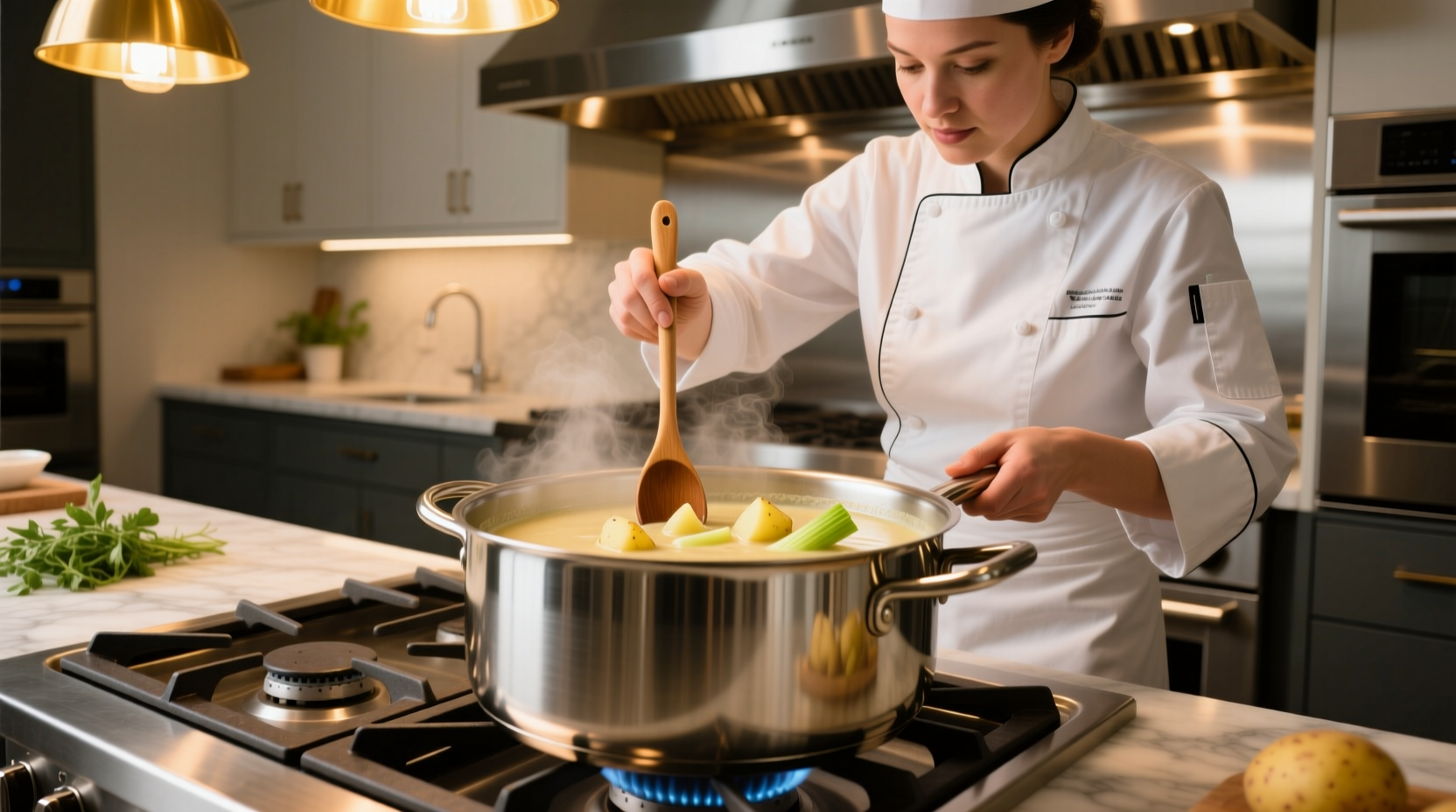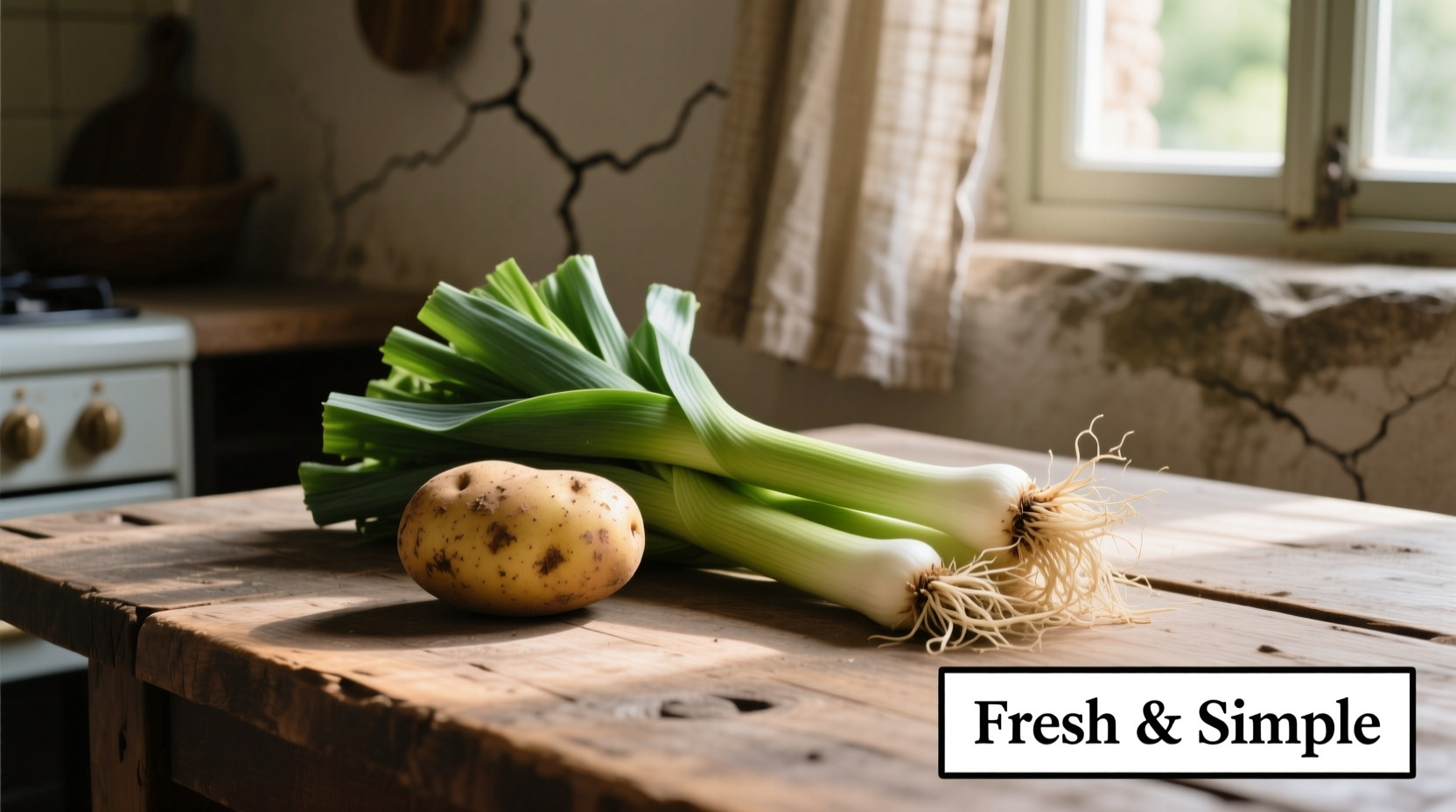Discover why potato and leek form one of culinary history's most perfect pairings. This guide delivers a foolproof classic soup recipe, expert preparation techniques, and creative variations that transform these humble ingredients into restaurant-quality dishes. You'll learn exactly how to select, clean, and cook potato and leek to maximize flavor while avoiding common mistakes that ruin texture and taste.
As a French-trained chef specializing in European spice traditions, I've spent years perfecting potato and leek preparations. This dynamic duo creates magic when handled correctly—sweet, earthy leeks complement the creamy texture of potatoes without overwhelming their delicate flavor. Forget watery, bland soups or gritty-textured disasters; understanding the science behind this pairing unlocks consistent, restaurant-quality results every time.
The Science Behind Potato and Leek Harmony
Potatoes and leeks share complementary flavor compounds that create depth without needing excessive seasoning. Leeks contain sulfur compounds that mellow beautifully when cooked slowly, while potatoes provide starch that naturally thickens soups. This pairing works across multiple cooking methods, but requires precise technique to avoid common pitfalls like waterlogged texture or bitter aftertastes.
| Potato Variety | Best For | Starch Content | Cooking Time |
|---|---|---|---|
| Russet | Creamy soups | High (20-22%) | 25-30 minutes |
| Yukon Gold | All-purpose use | Medium (16-18%) | 20-25 minutes |
| Red Bliss | Chunky preparations | Low (14-16%) | 15-20 minutes |
Source: University of Minnesota Extension
Selecting Quality Ingredients
Not all potatoes and leeks perform equally in recipes. For potato and leek soup, Yukon Gold offers the ideal balance of starch and moisture. Choose firm potatoes without green spots or sprouts—these indicate age and potential solanine development. When selecting leeks, look for crisp, bright green tops and firm white bases. Avoid wilted or yellowing leaves, which signal age and diminished flavor.
Professional chefs know that leek size affects cooking time and texture. Medium-sized leeks (about 1 inch in diameter) provide the best balance of flavor intensity and tenderness. Larger leeks often develop tough, fibrous centers that require careful trimming. Always purchase leeks with soil still clinging to their layers—this indicates recent harvesting and freshness.
Proper Cleaning and Preparation Techniques
Improper cleaning causes the most common potato and leek soup failure: gritty texture. Leeks trap sand between their layers, requiring thorough washing. Slice leeks vertically first, then submerge in cold water and swish vigorously. The sand sinks while clean leeks float. Drain through a colander and repeat if necessary.
For potatoes, peeling remains optional depending on variety. Yukon Gold skins contain valuable nutrients and add visual appeal, but Russets benefit from peeling due to thicker skin. Always cut potatoes into uniform 1/2-inch cubes to ensure even cooking. Smaller pieces break down too quickly, while larger chunks remain undercooked when the soup finishes.
Mastering the Classic Potato Leek Soup
The French technique for Potage Parmentier requires precise temperature control. Start by sweating leeks slowly in butter over medium-low heat for 10-12 minutes until translucent but not browned. High heat creates bitterness from the leeks' natural sugars. Add potatoes and stock gradually—never boiling liquid to cold ingredients, which shocks the vegetables and affects texture.
Simmer gently for 20-25 minutes until potatoes pierce easily with a fork. Overcooking causes potatoes to disintegrate, creating a gluey texture. For perfect consistency, blend only half the soup using an immersion blender, leaving some texture while maintaining creaminess. Finish with a squeeze of lemon juice to brighten flavors—a professional chef's secret that balances the natural starchiness.
Creative Variations Worth Trying
While classic potato leek soup shines simply prepared, these variations elevate the dish for different occasions:
- Roasted Garlic Version: Add 4 roasted garlic cloves during blending for deeper umami notes without overpowering the delicate leek flavor
- Smoked Paprika Twist: Stir in 1/2 teaspoon smoked paprika with the leeks for subtle complexity that complements without dominating
- Herb-Infused: Tie fresh thyme and parsley stems with kitchen twine, simmer with soup, then remove before blending for aromatic sophistication
- Seafood Adaptation: Replace half the stock with fish stock and finish with cooked scallops for an elegant first course
Avoiding Common Preparation Mistakes
Understanding context boundaries prevents recipe failures. Never use high-starch Russets in chunky potato leek soup—they dissolve completely. Avoid adding salt at the beginning; potatoes absorb it unevenly, leading to either bland or oversalted results. Wait until potatoes are nearly tender before seasoning.
Temperature control proves crucial when reheating. Bringing potato leek soup to a full boil after refrigeration breaks down the starch structure, creating a thin, watery consistency. Instead, reheat gently over low heat while stirring constantly. For best results, prepare soup one day ahead—flavors deepen beautifully overnight while starches stabilize.
Storage and Shelf Life Guidelines
Properly stored potato leek soup maintains quality for 3-4 days in airtight containers. Freeze in portion-sized containers for up to 3 months. When storing raw ingredients, keep leeks unwashed in the refrigerator's crisper drawer (up to 14 days), while potatoes require cool, dark storage (up to 3 weeks). Never refrigerate raw potatoes—they develop unpleasant sweetness from cold-induced starch conversion.
Reviving leftovers requires special attention. Potato soups often thicken excessively when chilled. Instead of adding plain water, use reserved potato cooking liquid or additional stock to restore ideal consistency without diluting flavor.

Perfect Pairings and Serving Suggestions
Classic potato leek soup shines with simple accompaniments that don't compete with its delicate flavor profile. A crusty baguette provides ideal texture contrast, while a sprinkle of fresh chives adds color without overwhelming. For elegant presentations, swirl in a teaspoon of crème fraîche and top with crispy leek threads.
Wine pairing follows the French tradition of matching earthy flavors with crisp whites. An unoaked Chardonnay or dry Riesling complements without dominating. For non-alcoholic options, sparkling water with lemon offers refreshing contrast to the soup's creaminess.











 浙公网安备
33010002000092号
浙公网安备
33010002000092号 浙B2-20120091-4
浙B2-20120091-4